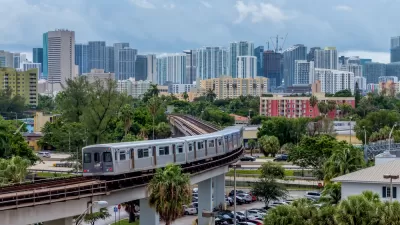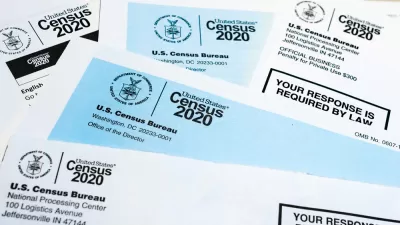Down to the level of individual census tracts, a team of researchers has developed national maps showing where upward mobility is probable, and where it isn't.

Hearkening back to demographic researcher Dustin Cable's Racial Dot Map, a team of researchers including Harvard's Raj Chetty have worked with the U.S. Census Bureau to assemble a compressive picture of which neighborhoods tend to foster children who get ahead, and which fail to do so.
The Opportunity Atlas, an interactive mapping tool, allows users to pinpoint specific census districts for comparison with the surrounding area, or zoom upward to see how counties and regions fare. According to reporting by Emily Badger and Quoctrung Bui, "for any government program or community grant that targets a specific place, this data proposes a better way to pick those places — one based not on neighborhood poverty levels, but on whether we expect children will escape poverty as adults."
The researchers, who in addition to Chetty include Nathaniel Hendren at Harvard, John N. Friedman at Brown University, and Maggie R. Jones and Sonya R. Porter at the Census Bureau, "believe much of this variation is driven by the neighborhoods themselves, not by differences in what brings people to live in them. The more years children spend in a good neighborhood, the greater the benefits they receive."
The question is whether policymakers, planners, philanthropists, and a whole range of neighborhood stakeholders will be able to use more finely-tuned data on opportunity to change places where "the federal government has spent billions [...] over the years, funneling as much as $500 million into some individual census tracts since 1990."
FULL STORY: Detailed New National Maps Show How Neighborhoods Shape Children for Life

Alabama: Trump Terminates Settlements for Black Communities Harmed By Raw Sewage
Trump deemed the landmark civil rights agreement “illegal DEI and environmental justice policy.”

Study: Maui’s Plan to Convert Vacation Rentals to Long-Term Housing Could Cause Nearly $1 Billion Economic Loss
The plan would reduce visitor accommodation by 25% resulting in 1,900 jobs lost.

Why Should We Subsidize Public Transportation?
Many public transit agencies face financial stress due to rising costs, declining fare revenue, and declining subsidies. Transit advocates must provide a strong business case for increasing public transit funding.

Paris Bike Boom Leads to Steep Drop in Air Pollution
The French city’s air quality has improved dramatically in the past 20 years, coinciding with a growth in cycling.

Why Housing Costs More to Build in California Than in Texas
Hard costs like labor and materials combined with ‘soft’ costs such as permitting make building in the San Francisco Bay Area almost three times as costly as in Texas cities.

San Diego County Sees a Rise in Urban Coyotes
San Diego County experiences a rise in urban coyotes, as sightings become prevalent throughout its urban neighbourhoods and surrounding areas.
Urban Design for Planners 1: Software Tools
This six-course series explores essential urban design concepts using open source software and equips planners with the tools they need to participate fully in the urban design process.
Planning for Universal Design
Learn the tools for implementing Universal Design in planning regulations.
Smith Gee Studio
Alamo Area Metropolitan Planning Organization
City of Santa Clarita
Institute for Housing and Urban Development Studies (IHS)
City of Grandview
Harvard GSD Executive Education
Toledo-Lucas County Plan Commissions
Salt Lake City
NYU Wagner Graduate School of Public Service





























